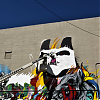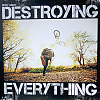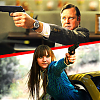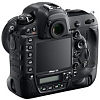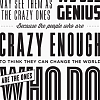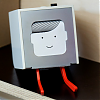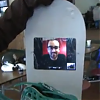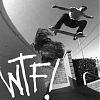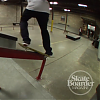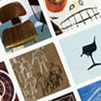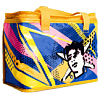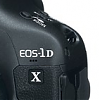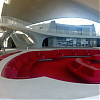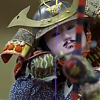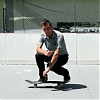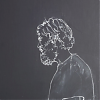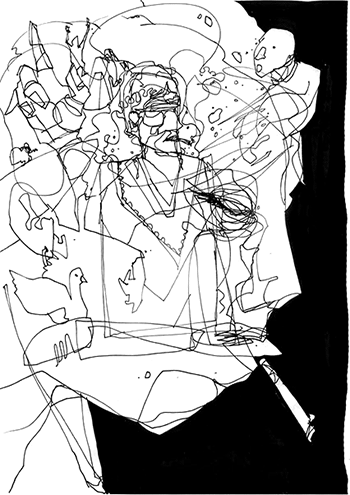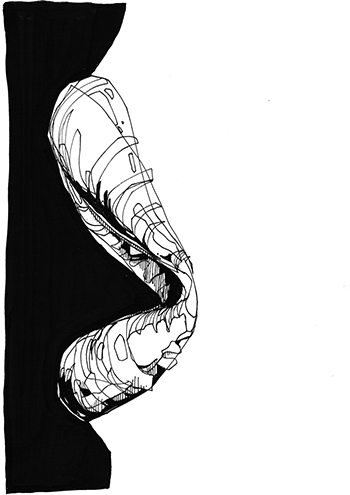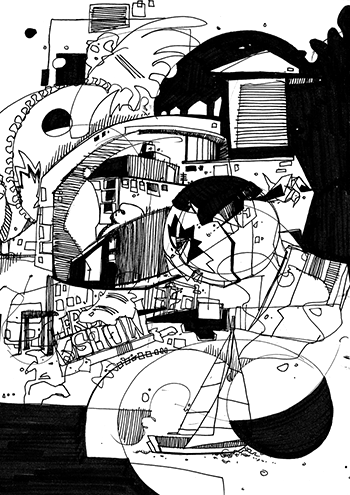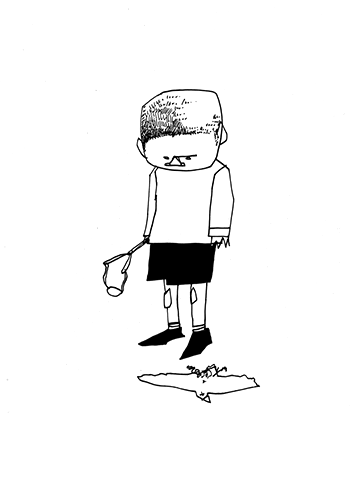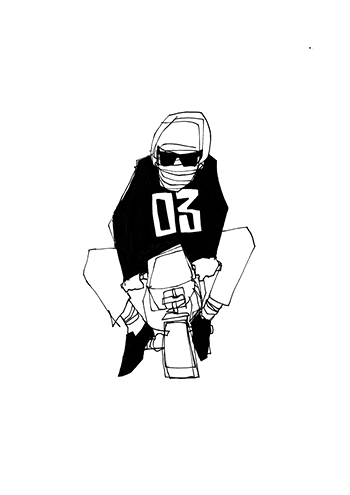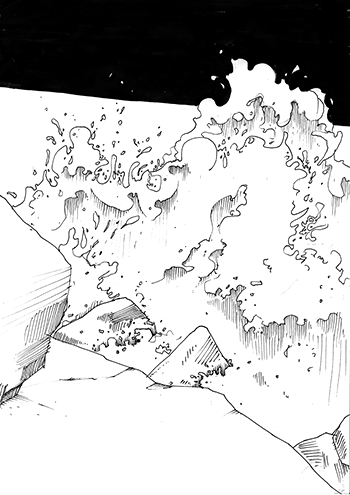goodstuff 030
artbook
MIND OF MORCKY
I was at Morcky’s flat in Amsterdam a few months ago when I first had a chance to check out some the images that would come to be included in his recent book release, Day and Night. The finished work, realized with support from No New Enemies and Buzzworks, is a cohesive, thought-provoking collection of black-and-white illustrations that touch on a number introspective and collective experiences. Morcky was kind enough to answer a few questions and give some insight into the creation of the project.
How did you decide to create Day and Night? Is it something you were thinking about for a long time before you started?
Day and Night has been the answer to the need of giving a shape to a lot of material, ideas and useless lines that I constantly produce in my daily routine. I am surrounded by tons of sketches and unfinished drawings that are a big part of my work, but most of them don’t make it to become a painting or a colored illustration or a mural, so collecting them together was a way for me to order them and finish them. So Day and Night is the intuition that all this work constitutes by itself a proper finished project.
How much time was spent working on the illustrations?
I spent three months drawing and collecting ideas and intuitions. Then I realized that if I would have rearranged all the material in one collection, it would actually make sense all together and become a unique piece of work. So I spent one month fixing all the stuff and giving it some kind of coherence. Only few drawings from before this period have been reinterpreted to fit the collection.
You display many different styles throughout the collection; was that a conscious effort?
I think it is part of my attitude to drawing and to life in general. I cannot keep doing the same thing on and on, so after a while I need to find different directions and explore new unknown—to me—territories. This attitude sometimes creates a bit of misunderstanding regarding my style; at times people are disorientated by not seeing what they expect to see, and I really like that. I feel I can’t achieve something new without changing constantly. I cannot do without, that’s what I am made of.
Tell me about the layout of the images in the book.
The layout process has been very interesting to me. All the images got really empowered when they became part of something bigger around them. They started talking to each other and began to get a new meaning when paired. The arranging also created an open and free storytelling, made only of imaginary connections and intuitions. When I draw I rarely start with an idea: the process will determine the final result and what happens in the middle is the journey, which is the most interesting part of the creativity for me. I let images appear in front of my eyes and follow the intuition freely, without structuring in advance because that would limit my imagination. Looking for a meaning is—most of the time—misleading for my creativity. And the more I practice this way of working the more I feel that is my way to go, it’s what really sets me free and liberates my mind from a useless “want to do something.” It becomes more natural, it just happens, just like nature. In life to me there is no reason why, there is no god and no ancestral plan that wanted the world to become what it is. It just is. And that’s what I try to do with my creativity.
Did you have a progression in mind when you began?
The progression, like the drawings, appeared to me during the process, and it wasn’t clear until the final layout, as the pages kept moving and shifting position and the story kept changing.
Tell me about the exhibitions and installations you have been presenting for the book’s release.
I’ve done three book presentations so far, in Brussels, Antwerp and Rotterdam. Now I am preparing a new one in Amsterdam for the end of May. It has been really fun, because each situation was different from the other. Also after having gone through this material for a while, it felt really natural to arrange the shows and to paint subjects that I was really confident with. Actually the presentations are not as exciting as the realization of the book itself, because you already know what it is about—there is no real discovery, which is the most beautiful part of the creative process—but they are great because they’re when you start having reactions from the people, seeing what they react to, what they like, the pages they stop looking at, the stuff that they seem not even to notice… it’s kind of surprising most of the time.
Is there anything else you would like our readers to know about the project?
Being that the book is my first large collection of images together, I realized that the format allowed me to do something I couldn’t do before. It’s really different from many other ways of collecting your work together. I found a medium that really fit my way of working, and that made me really happy. I already started arranging together a lot of new studies and drawings that are going again in new directions and I really look forward to see what they will become.
—Omar Almufti, 13 July 2010
SHARE: FACEBOOK TWITTER LINKEDIN STUMBLEUPON G+
HOME
contents



